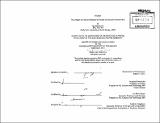| dc.contributor.advisor | Krzysztof Wodiczko. | en_US |
| dc.contributor.author | Wojtowicz, Ian (Ian Stanislaw) | en_US |
| dc.contributor.other | Massachusetts Institute of Technology. Program in Art, Culture and Technology. | en_US |
| dc.date.accessioned | 2013-04-12T19:30:41Z | |
| dc.date.available | 2013-04-12T19:30:41Z | |
| dc.date.copyright | 2011 | en_US |
| dc.date.issued | 2012 | en_US |
| dc.identifier.uri | http://hdl.handle.net/1721.1/78506 | |
| dc.description | Thesis (S.M. in Visual Studies)--Massachusetts Institute of Technology, Dept. of Architecture, September 2012. | en_US |
| dc.description | Cataloged from PDF version of thesis. | en_US |
| dc.description | Includes bibliographical references (p. 163-165). | en_US |
| dc.description.abstract | "The history of the Polish-Jewish relationship is...the embattled terrain of several collective memories, each with its claim to moral legitimacy, and each charged with fierce and sometimes vehement feelings." These contested histories are the source of tension and animosity between Poles and Jews to this day. Unlike the German-Jewish relationship, where "the moral rights and wrongs were starkly clear," Poland's past is far more complex. This thesis describes the design of a storage and retransmission medium for these contested histories, using photography, nomadic performance, new media mapping techniques and imaginary architecture. The system, entitled B'Seder, makes use of the ancient technology of memory palaces to produce a long-term relational aesthetic practice for the transformation of post-conflict societies through storytelling, conversation, and the mapping of narratives into visual forms. Using a well established process from post-traumatic therapy, the medium focuses on restructuring fragmented memories into a cohesive, flowing story. In formal terms, the project begins with a photograph of an empty room. Anecdotes are collected from readings, films and conversations with community participants. These anecdotes are then transformed into mnemonic objects, which are depicted in the image. This process of accumulation of object/stories continues as the image is taken to new sites with new participants. The system then transitions into an editing and organizing mode where these anecdotes are arranged into a singular narrative sequence, which is memorized and recounted in public space. | en_US |
| dc.description.statementofresponsibility | by Ian Wojtowicz. | en_US |
| dc.format.extent | 165, [1] p. | en_US |
| dc.language.iso | eng | en_US |
| dc.publisher | Massachusetts Institute of Technology | en_US |
| dc.rights | M.I.T. theses are protected by
copyright. They may be viewed from this source for any purpose, but
reproduction or distribution in any format is prohibited without written
permission. See provided URL for inquiries about permission. | en_US |
| dc.rights.uri | http://dspace.mit.edu/handle/1721.1/7582 | en_US |
| dc.subject | Architecture. | en_US |
| dc.subject | Program in Art, Culture and Technology. | en_US |
| dc.title | B'Seder : the design of a social medium for Polish and Jewish communities | en_US |
| dc.title.alternative | Design of a social medium for Polish and Jewish communities | en_US |
| dc.type | Thesis | en_US |
| dc.description.degree | S.M.in Visual Studies | en_US |
| dc.contributor.department | Massachusetts Institute of Technology. Program in Art, Culture and Technology | en_US |
| dc.contributor.department | Massachusetts Institute of Technology. Department of Architecture | |
| dc.identifier.oclc | 836786277 | en_US |
